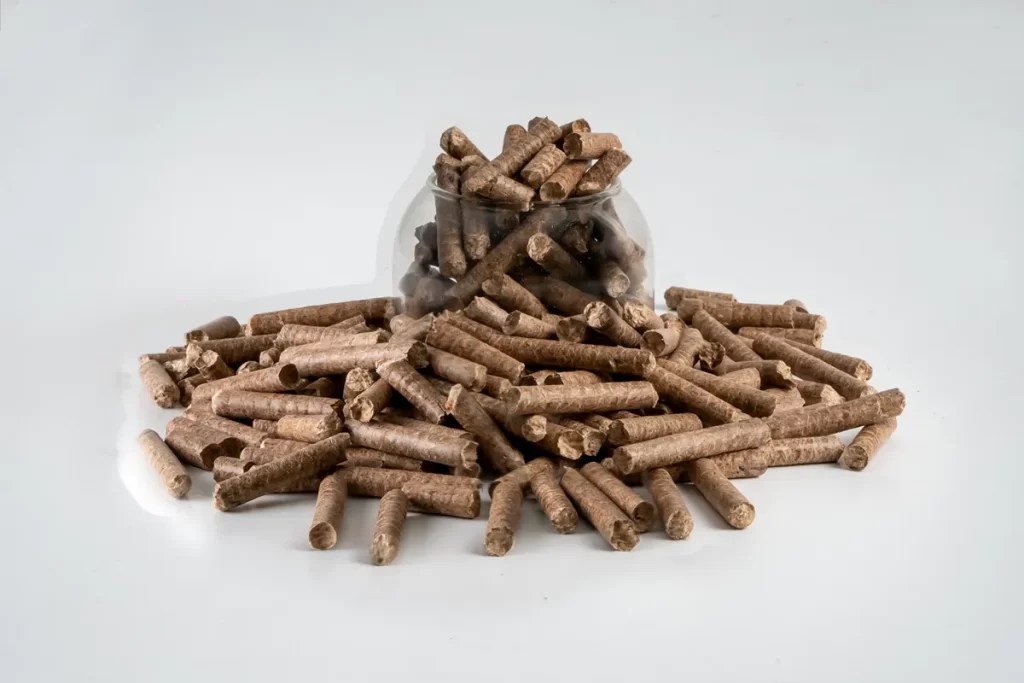In the global search for cleaner, sustainable energy sources, one of the most effective solutions is also one of the simplest. Humbly born from sawdust, wood chips, and forestry residue, wood pellets are small, compressed cylinders that pack a powerful punch. These biofuels are rapidly becoming a mainstream alternative to fossil fuels, powering everything from home heating stoves to massive industrial power plants.
This article delves into the world of wood pellets, exploring how they are made, their significant benefits, and their crucial role in the worldwide transition to renewable energy.
From Waste to Wattage: The Manufacturing Process
The creation of a wood pellet is a brilliant example of turning waste into a valuable resource. The process transforms low-density, difficult-to-handle raw biomass into a uniform, high-energy fuel.
- Material Collection: The process begins with raw materials, which are typically byproducts from sawmills, furniture manufacturing, and forestry operations. This includes sawdust, wood shavings, and wood chips.
- Drying: The raw material is dried in an industrial dryer to reduce its moisture content from around 50% to less than 10%. This step is critical for ensuring the pellets burn efficiently and produce minimal smoke.
- Grinding: The dried material is then ground into a fine, consistent powder in a hammer mill.
- Pelletization: This fine powder is fed into a pellet mill, where it is forced through a die under immense pressure and heat. This process releases lignin, a natural polymer found in wood, which acts as a binding agent to hold the pellet together without the need for artificial glues.
- Cooling and Sieving: The hot, newly formed pellets are cooled to harden and stabilize them. They are then sieved to remove any remaining dust before being packaged for transport.
The Advantages of a Densified Fuel
The popularity of wood pellets stems from a unique combination of environmental, economic, and practical benefits.
- Renewable and Carbon Neutral: Pellets are made from biomass, a renewable resource. They are considered carbon neutral because the carbon dioxide released during combustion is equivalent to the amount absorbed by the tree during its growth. This closes the carbon loop, unlike fossil fuels which release long-sequestered carbon into the atmosphere.
- High Energy Density and Efficiency: The low moisture and high density of pellets mean they burn hotter and more efficiently than raw wood. Their uniform size and shape allow for automated and precisely controlled feeding systems in stoves and boilers, optimizing energy output.
- Low Emissions: Compared to coal and heating oil, wood pellets produce significantly lower emissions of sulfur and other harmful pollutants.
- Easy to Handle and Store: Unlike bulky firewood or messy coal, pellets are clean, compact, and easy to store. They are typically sold in manageable bags for residential use or delivered in bulk for industrial applications.
Diverse Applications: From Home Hearths to Power Plants
The versatility of wood pellets allows them to be used across different scales.
- Residential Heating: Modern pellet stoves and boilers are a popular choice for homeowners seeking an efficient, automated, and eco-friendly heating solution. They offer the ambiance of a wood fire with greater convenience and control.
- Commercial and Industrial Heat: Schools, hospitals, and factories use large-scale pellet boilers to generate heat and steam for their operations, often at a lower and more stable cost than oil or natural gas.
- Electricity Generation: This is the largest and fastest-growing market for wood pellets. Many coal-fired power plants have been converted to “co-fire” with wood pellets, replacing a percentage of their coal intake to reduce emissions and meet renewable energy targets. Furthermore, new power plants are being built to run exclusively on biomass.
A Sustainable Future Hinges on Responsible Sourcing
While wood pellets offer immense environmental benefits, their sustainability is critically dependent on the source of the raw material. It is essential that the wood comes from sustainably managed forests and industrial byproducts, not from the clearing of old-growth forests. Reputable pellet producers adhere to strict certification standards, such as those from the Forest Stewardship Council (FSC) or the Programme for the Endorsement of Forest Certification (PEFC), to ensure responsible sourcing.
Wood pellets represent a powerful step forward in our journey away from fossil fuels. By transforming wood residue into a clean, dense, and efficient fuel, they provide a practical and scalable solution for heating our homes and powering our industries. As global demand for clean energy continues to rise, this compressed powerhouse is set to play an even more significant role in fueling a sustainable and responsible future.

